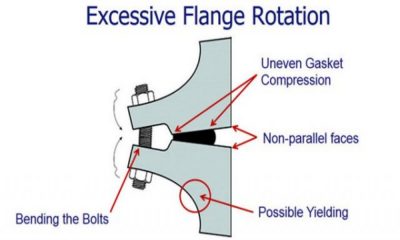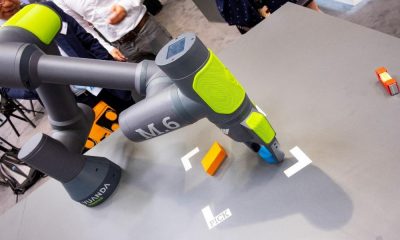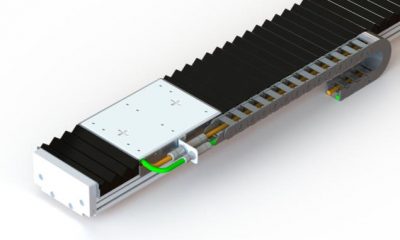Actuators
What is the difference between a linear actuator and a rotary actuator?

Usually, in discussion about these terms, we tie in the word actuator – so more precisely, what is the difference between a linear actuator vs a rotary actuator?
Linear actuators, in essence, move something along a straight line, usually back and forth. Rotary actuators, on the other hand will turn something a number of degrees in a circle – it might be a limited number or an infinite number. So, linear actuator – back and forth, Rotary actuator – round and round.
 In the pure sense of the word, a simple motor is considered a rotary actuator. When current is applied to a basic servo motor, the motor rotates. Connect a motor directly to a load – you create a direct drive rotary actuator. Many rotary actuators are combined with mechanisms that are used as mechanical levers (an advantage) to decrease rotational speed and increase torque. The output of this assembly is still a rotary actuator if the end result is rotational.
In the pure sense of the word, a simple motor is considered a rotary actuator. When current is applied to a basic servo motor, the motor rotates. Connect a motor directly to a load – you create a direct drive rotary actuator. Many rotary actuators are combined with mechanisms that are used as mechanical levers (an advantage) to decrease rotational speed and increase torque. The output of this assembly is still a rotary actuator if the end result is rotational.
On the other hand, rotary actuators also connect to mechanisms that translate the rotational motion to a back and forth motion, and are called…yes – linear actuators.
What are these mechanisms I speak of? Belt and pulleys, gear boxes, ball and lead screws, rack and pinions. All these mechanisms are mechanical devices that translate energy in some way. Belts and pulleys can be used to translate rotary motion of a servo motor into a linear motion (e.g. conveyor). Gearboxes are typically multiplying torque, reducing speed of a rotary motion – but also can be used in combination with a mechanism that will translate the rotary motion into linear motion. Ball screws and Roller screws are typically used to translate rotary motion of a servo into a precision linear motion, such as on machining centers.
One word of caution – each time some translation of motion occurs between multiple bodies, an element of compliance is introduced, which effects the ability of that actuator to respond quickly – to achieve a high bandwidth. Hence getting as close to the load as possible, such as a direct drive rotary or direct linear motor solution typically provides the highest bandwidth system.

-

 Drive systems4 years ago
Drive systems4 years agoIntelligent frequency inverters for digital production
-

 Industrial Hardware and Machine Parts7 years ago
Industrial Hardware and Machine Parts7 years agoThe necessity of bolted flange connection training
-

 Motors7 years ago
Motors7 years agoNew generation of hollow shaft motors
-

 Industrial Hardware and Machine Parts7 years ago
Industrial Hardware and Machine Parts7 years agoABB and Formula E partner to write the future of e-mobility
-

 Industrial Hardware and Machine Parts7 years ago
Industrial Hardware and Machine Parts7 years agoRexnord adds to its Autogard Torque Limiters with the XG Series
-

 Motors7 years ago
Motors7 years agoZF Technology on the Winners’ Podium of the Dakar Rally 2017
-

 Gear drives6 years ago
Gear drives6 years agoKlingelnberg at control 2018: Tactile and optical measurement on one machine
-

 Motors7 years ago
Motors7 years agoGet a first-class ticket to productivity
-

 Motion control6 years ago
Motion control6 years agoWhere the robots come from?
-

 Motion control6 years ago
Motion control6 years agoRexnord to Acquire Centa Power Transmission
-

 Industrial Hardware and Machine Parts7 years ago
Industrial Hardware and Machine Parts7 years agoCustom hobbing tool enables 45-degree angles
-

 POWER TRANSMISSION TECHNOLOGIES3 years ago
POWER TRANSMISSION TECHNOLOGIES3 years agoEUROTRANS Board meets for its first session in 2021











